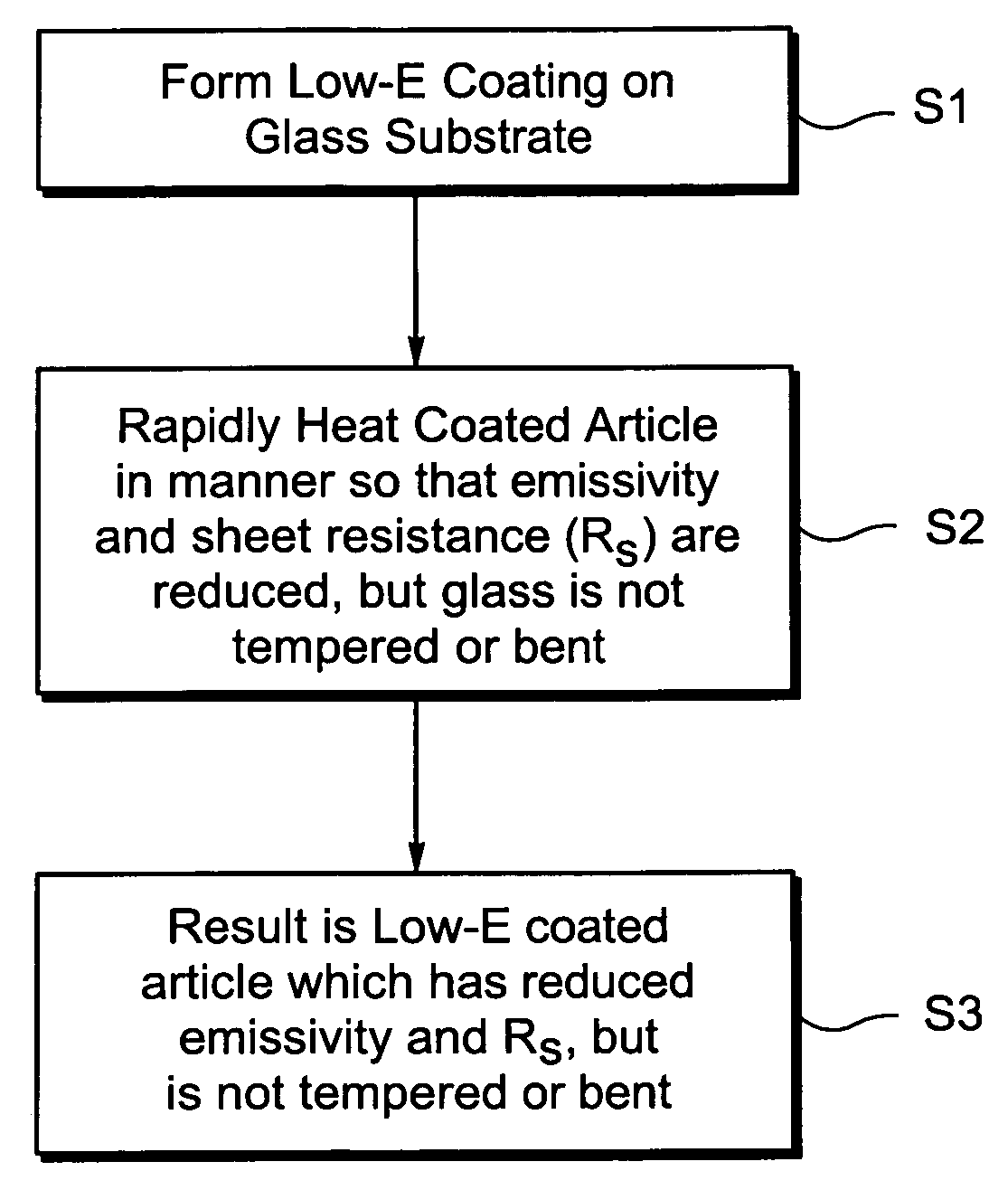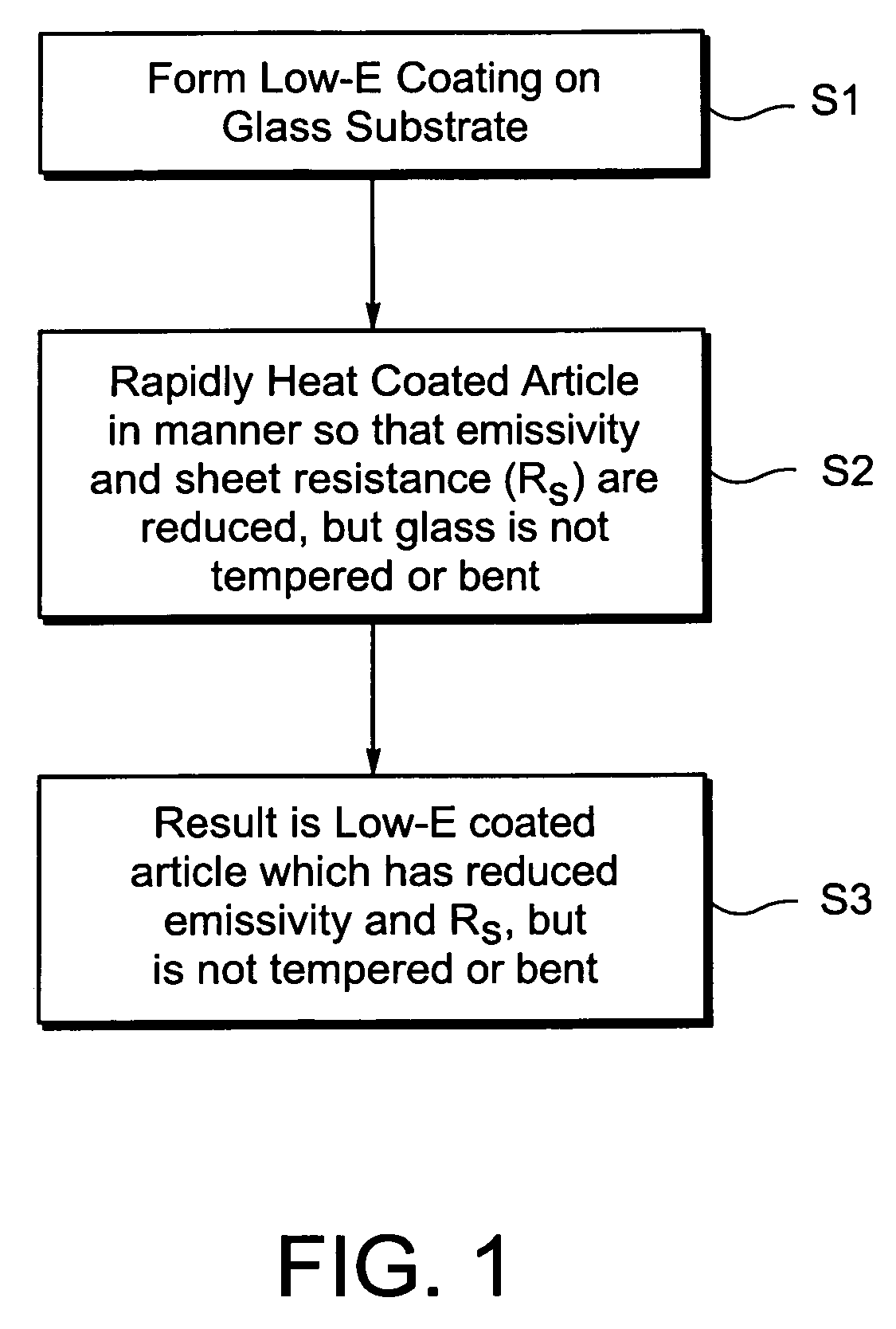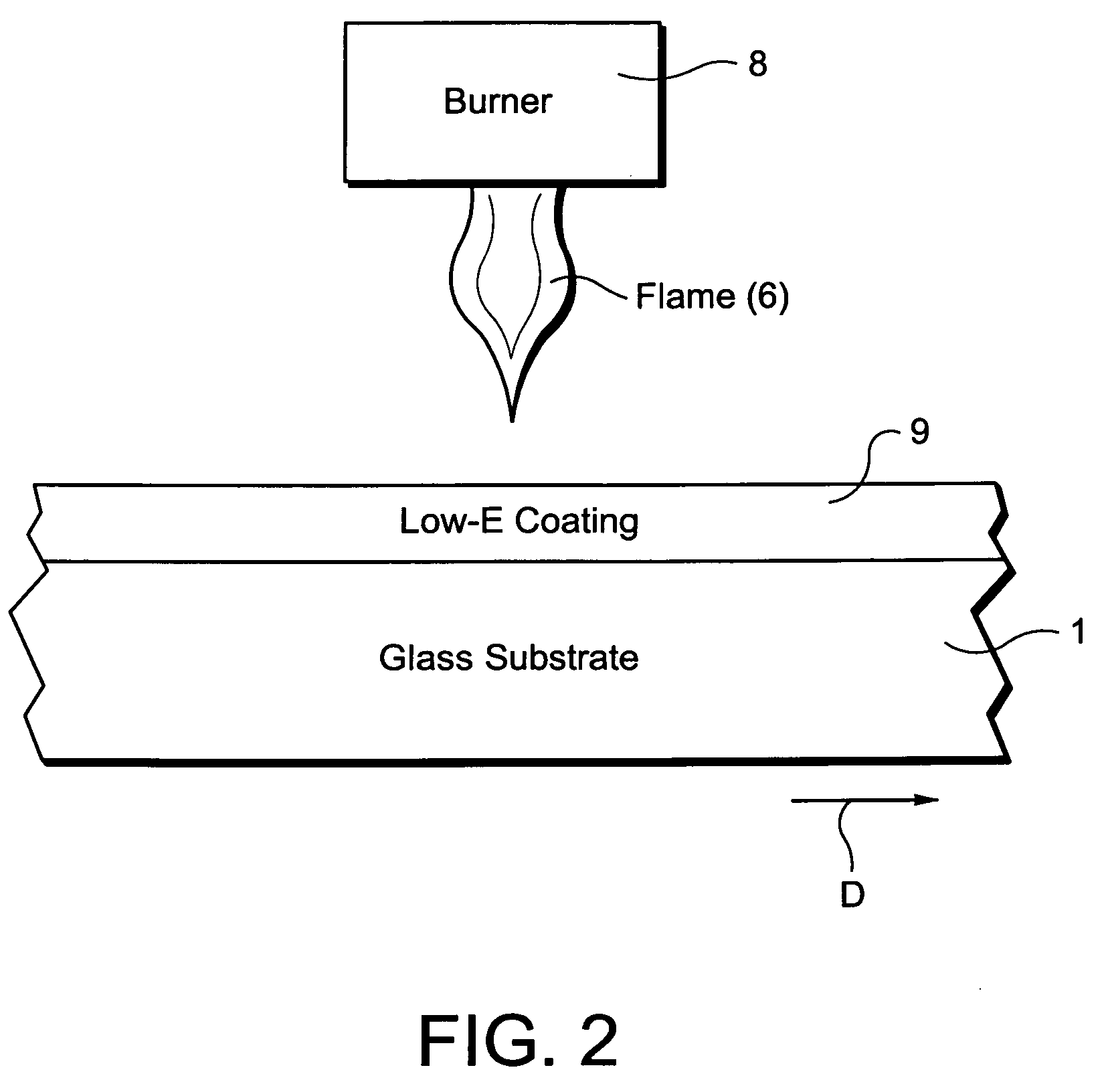Method of making coated article using rapid heating for reducing emissivity and/or sheet resistance, and corresponding product
a technology of emissivity and sheet resistance, applied in the direction of coatings, pretreated surfaces, special surfaces, etc., can solve the problems of non-temperable low-e coatings that cannot be subjected to such intense heating, undesirable degradation, and non-temperable (or non-heat-treatable) low-e coatings that often suffer an increase in emissivity, so as to reduce the emissivity
- Summary
- Abstract
- Description
- Claims
- Application Information
AI Technical Summary
Benefits of technology
Problems solved by technology
Method used
Image
Examples
Embodiment Construction
[0013]Referring now more particularly to the accompanying drawings in which like reference numerals indicate like parts throughout the several views.
[0014]In certain example embodiments of this invention, a non-temperable low-E coated article is subjected to rapid heat treatment, but only so that the glass of the coated article does not heat to an extent necessary for thermal tempering or heat bending purposes. In certain example embodiments of this invention, at least one flame is utilized to rapidly heat the low-E coating of the low-E coated article, the heat from the flame(s) being sufficient to cause at least one IR reflective layer(s) (e.g., silver based layer(s)) of the coating to undergo at least some recrystallization and / or crystal perfection during such heating. However, the heat from the flame is not sufficient to cause thermal tempering or heat bending of the glass. In other words, the temperature of the glass remains below the range necessary for thermal tempering for e...
PUM
| Property | Measurement | Unit |
|---|---|---|
| emissivity | aaaaa | aaaaa |
| emissivity | aaaaa | aaaaa |
| emissivity | aaaaa | aaaaa |
Abstract
Description
Claims
Application Information
 Login to View More
Login to View More - R&D
- Intellectual Property
- Life Sciences
- Materials
- Tech Scout
- Unparalleled Data Quality
- Higher Quality Content
- 60% Fewer Hallucinations
Browse by: Latest US Patents, China's latest patents, Technical Efficacy Thesaurus, Application Domain, Technology Topic, Popular Technical Reports.
© 2025 PatSnap. All rights reserved.Legal|Privacy policy|Modern Slavery Act Transparency Statement|Sitemap|About US| Contact US: help@patsnap.com



